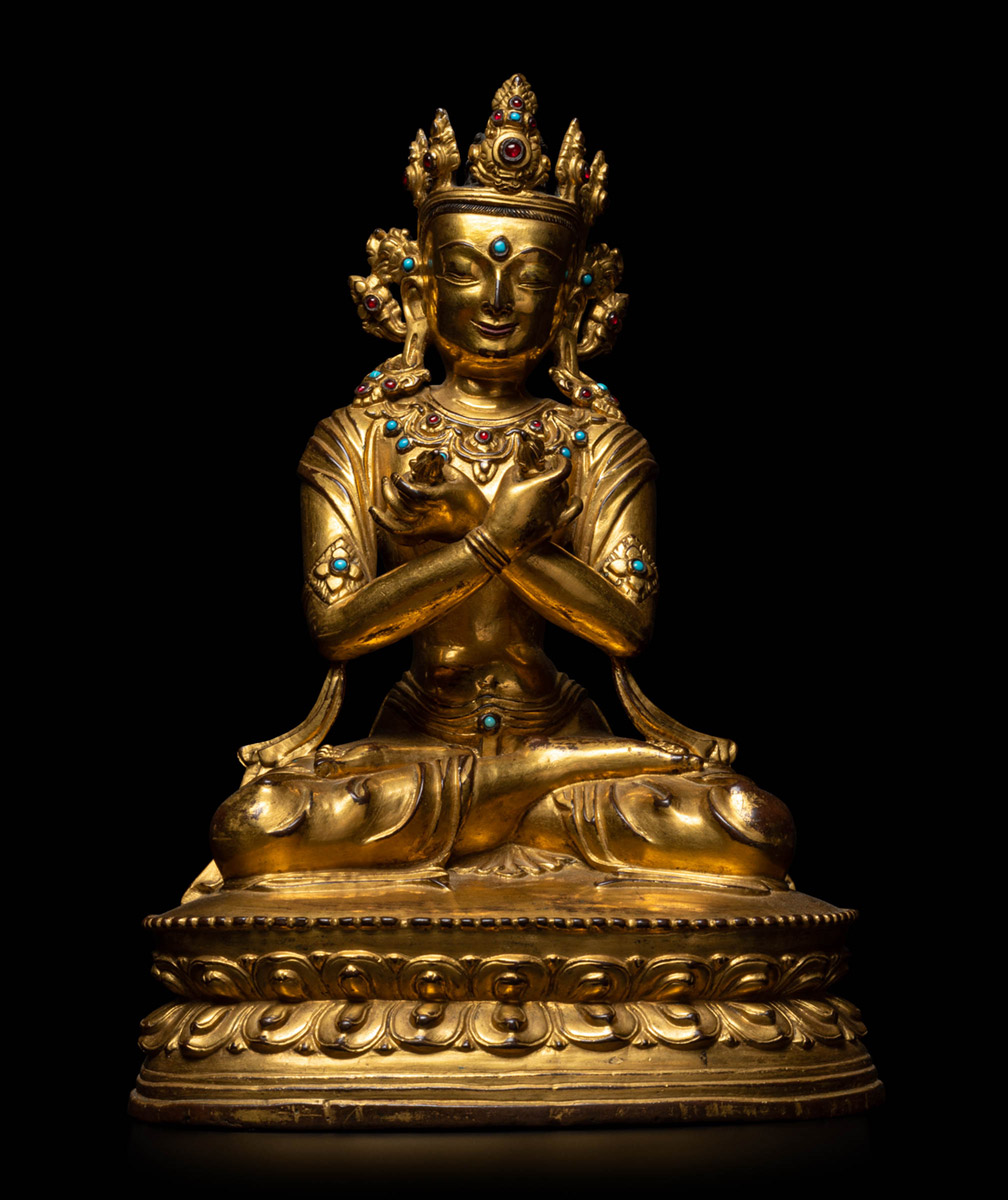

|
3. A gilt-bronze figure of Vajradhara Tibet 15th century 9 3/4 in. (24.8 cm.) high |

Provenance: The collection of Holger Rosell (1917–2009), Stockholm. The collection of the National Museum Prins Eugens Waldemarsudde, Stockholm. Uppsala Auktionskammare, 5 December 2014, lot 1001. Published: Himalayan Art Resources (himalayanart.org), item no. 8375. The present figure represents the primordial buddha Vajradhara. His hands—crossed in front of his heart in vajrahumkara mudra (the gesture of the ‘adamantine sound’) holding a vajra/dorje and ghanta/drilbu (bell)—make him easily recognizable. His elaborate ornaments identify him as a symbolic buddha in bodhisattva appearance. This lustrous figure of Vajradhara is finely sculpted on a double-lotus base, clad in a dhoti with a shawl draped over his shoulders, flowing down symmetrically on either side of his torso to rest on his seat. An urna of inset turquoise sits below his five-leaf tiara behind which his hair is pulled into a neat pile surmounted by a half vajra. The complexity of the woven knots within his chignon is revealed from the backside of the sculpture, as is the careful execution of each element, despite the fact that these facets are frequently hidden. The sculpture is embellished with small turquoise and ruby or garnet cabochons set in bezels to accentuate his crown, necklace, armbands, and belt—a style of inlay more common among Nepalese bronzes than Tibetan ones. However, the square face, the straight slope of the buddha’s nose in profile, the exclusion of a garuda element from the crown, and the festooned design of Vajradhara’s prominent necklace point to a Tibetan origin. Detail: hands Detail: crown |